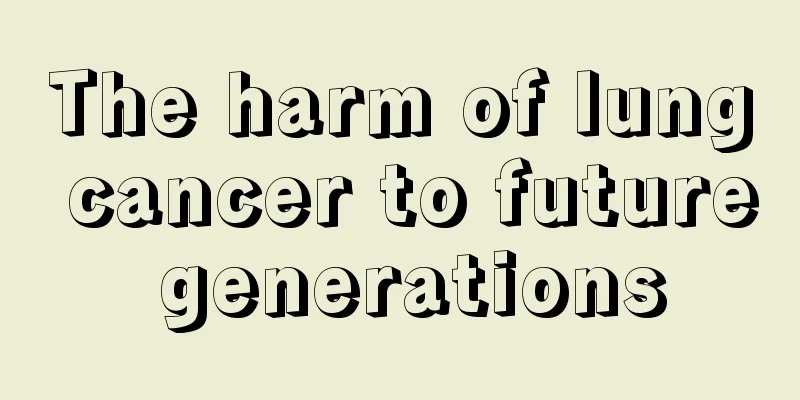The harm of lung cancer to future generations

|
What are the hazards of lung cancer to future generations ? Lung cancer is the abbreviation of primary bronchogenic carcinoma . The tumor cells originate from the bronchial mucosa or glands. There are often regional lymph node metastasis and hematogenous dissemination. In the early stage, there are often respiratory symptoms such as irritating cough and blood in sputum. The progression rate of the disease is related to the biological characteristics of the cells. Lung cancer is one of the most common malignant tumors in the world and is a disease that seriously threatens people's health and life. The onset site generally follows the following rules, that is, the right lung is more common than the left lung, the upper lobe is more common than the lower lobe, and cancer can occur from the main bronchi to the bronchioles. According to the different locations of lung cancer, lung cancer is clinically divided into three categories: central lung cancer, peripheral lung cancer, and diffuse lung cancer. Lung cancer originating from the main bronchi and lobar bronchi, located near the hilum of the lung, is called central lung cancer ; lung cancer originating below the segmental bronchi, located in the peripheral part of the lung, is called peripheral lung cancer ; lung cancer originating from the bronchioles or alveoli, and diffusely distributed in both lungs is called diffuse lung cancer. Lung cancer originates from the bronchial mucosal epithelium. Tumors confined to the basement membrane are called carcinoma in situ. They can grow into the bronchial cavity and/or adjacent lung tissues, and can spread through lymphatic blood or bronchial metastasis. The growth rate and metastasis of the tumor are related to its biological characteristics such as histological type and degree of differentiation. Lung cancer is a hereditary disease, which has been confirmed by medical research institutes, especially for young people. The main risk factors for lung cancer in young and middle-aged people are heredity and smoking. Japanese scholars further conducted genetic epidemiological studies on the incidence of different tissue types and found that 35.8% of patients with squamous cell lung cancer had a family history of lung cancer, which was significantly different from other populations ; 58.3% of female patients with alveolar cell carcinoma had a family history of lung cancer, and 3/4 of them had parents with lung cancer.
|
<<: How to check blood metastasis of lung cancer
>>: Which hospital has good equipment for treating gallbladder cancer
Recommend
How to wash off oil stains from clothes
As people in modern society pay more and more att...
Key points for diagnosis of colon cancer
Many friends have trouble sleeping and eating bec...
Honeycomb cures rhinitis
Honeycomb, also known as beehive, is a food that ...
Does rock sugar increase or reduce internal heat?
We all know that rock sugar is indispensable in o...
Can colon cancer patients be contagious?
Is colon cancer contagious? Do you know that colo...
How to relieve gout joint pain
If you have gout, it often causes joint pain. Thi...
The harm caused by glioma to the human body
Nowadays, the incidence of brain glioma is gettin...
What are the latest treatments for hepatitis C?
I believe that many people are confused about hep...
What are the best ways to relieve pain from hemorrhoids?
There are many reasons for the formation of hemor...
What is polygalacturonase?
Polygalacturonase is extracted from the digestive...
Symptoms of secondary epilepsy
There are many epilepsy patients in our lives. We...
Will eating moldy food cause liver cancer? You should know these causes of liver cancer
Liver cancer is a highly malignant tumor disease ...
Only by doing a good job of preventing liver cancer can this disease be kept away from life
Liver cancer is one of the most common tumors, bu...
What to do if you have a hunchback
In many cases, what people do are quite different...
What to do if skin allergies cause red spots
When human skin touches something highly irritati...









